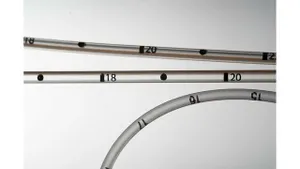The long arm of REACH: How the EU regulation affects the plastics industry
The EU REACH regulation, an acronym that stands for the registration, evaluation, authorization, and restriction of chemical substances, is understandably perceived by companies to be a chemicals regulation. In fact, it has a much broader scope, says Scott Sagamang, Business Development Manager for REACH Services at TUV Rheinland of North America. "This law applies to plastics as well as articles imported into the European Union," he says. Articles is the term used in the regulation, and is euro-speak for an array of finished products including toys, furniture, and sporting goods.
March 31, 2014

The EU REACH regulation, an acronym that stands for the registration, evaluation, authorization, and restriction of chemical substances, is understandably perceived by companies to be a chemicals regulation. In fact, it has a much broader scope, says Scott Sagamang, Business Development Manager for REACH Services at TUV Rheinland of North America. "This law applies to plastics as well as articles imported into the European Union," he says. Articles is the term used in the regulation, and is euro-speak for an array of finished products including toys, furniture, and sporting goods. "It encompasses everything from a frisbee to a locomotive," says Sagamang. As such, injection molders and materials suppliers exporting to the European Economic Area (EEA), which encompasses member states of the European Union plus Iceland, Liechtenstein, and Norway, need to be keenly aware of this regulation.
Reach entered into force in June 2007, but it has a staggered registration timeline depending on the quantity of substances a company produces for the EU market. New substances, called non-phase-in substances in the regulation, must be registered with the European Chemicals Agency (ECHA) before they can be placed on the markets of EEA countries. Existing, or phase-in, substances on those markets benefit from a transitional timeline. When the regulation came into force in 2007, companies producing more than 1000 t of substances per year were required to preregister. The threshold is lower for materials deemed to be hazardous.
The preregistration deadline expired on May 31, 2013, for import volumes of 100 to 1000 t per year. Companies producing or importing 100 to 1000 t per year after June 1, 2013, require full registration. Starting in May 2018, that threshold drops to 1 to 100 t per year.
Late preregistrations for the May 31, 2018, deadline have to be submitted within six months following the manufacture or importation of substances that exceed the 1 to 100 t threshold and no later than 12 months before the relevant 1 to 100 t registration deadline. Substances classified as carcinogenic, mutagenic, or toxic to reproduction (CMR) in category 1 or 2 that are imported or manufactured in quantities greater than 1 t per year also require full registration since May 31, 2013.
The regulation requires "manufacturers and importers to collect or generate data on the substances they manufacture or import, to use these data to assess the risks related to these substances, and to develop and recommend appropriate risk management measures to control these risks," notes a guidance document published by the ECHA. The agency has published a number of guidance-in-a-nutshell documents that provide manufacturers with a concise summary of the various REACH requirements. They are available online.
The guidance stresses that companies outside the EEA that export substances on their own, in mixtures, or in articles into the EEA must be in compliance with REACH regulations. Because the regulation has a broad reach (pun intended) and some of the substances are already closely monitored under existing legislation, a handful are exempt, including substances used in medical products and foodstuffs.
Even under the best of circumstances, achieving compliance is a complicated process from both the preparation/substance as well as the article perspectives. For example, "polymers are exempt, but monomers are not," says Sagamang. "The concentration of Substances of Very High Concern (SVHCs) also must be considered for all articles under REACH. The concentration threshold for SVHCs is 0.1% weight/weight for the complete article. Additional obligations may apply if finished products contain SVHCs in excess of the concentration threshold," says Sagamang.
Procrastination is not an option. "Companies doing business in the European Union that are subject to REACH need to be preregistered by 2018," says Sagamang. "The alternative is going through a full registration process."
Companies that produce or import 1 to 100 t per year that are not registered by the 2018 deadline will have to cease imports. "In some cases, the full registration process could take up to a year or more to complete, and the market will be lost until registration is complete," says Sagamang. Costs to complete a full registration will vary based on the number of substances and their hazard classifications. Fines and penalties, determined by EU member states, may also be assessed for noncompliance. More information regarding fines and penalties can be found online.
Even if you don't do business in Europe, you are not off the hook. Countries outside of Europe often adapt EU regulations, and REACH is no exception. "Korea will roll out K-Reach in January 2015," says Sagamang. China, Malaysia, Japan, and Turkey have already implemented REACH-like legislation, and many other countries are drafting similar legislation, adds Sagamang.
Norbert Sparrow is Senior Editor at PlasticsToday. Follow him on twitter @norbertcsparrow and Google+.
About the Author(s)
You May Also Like




